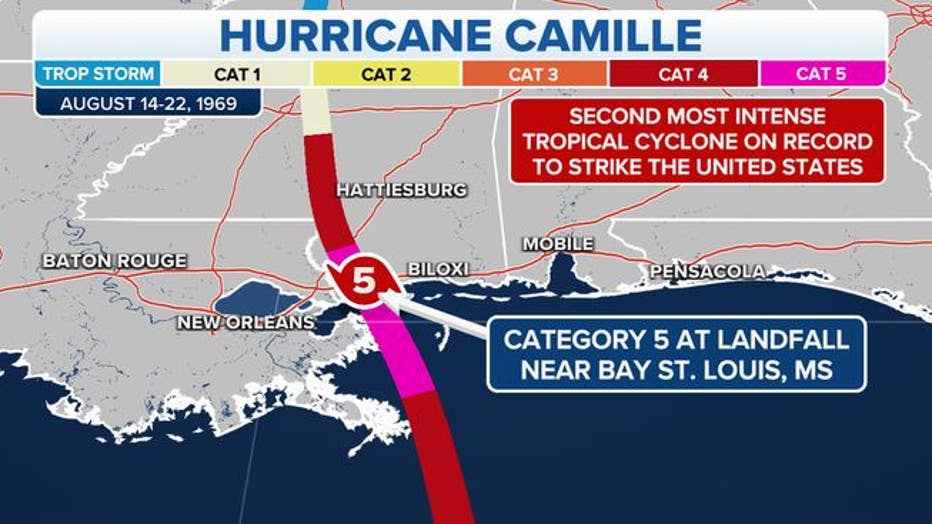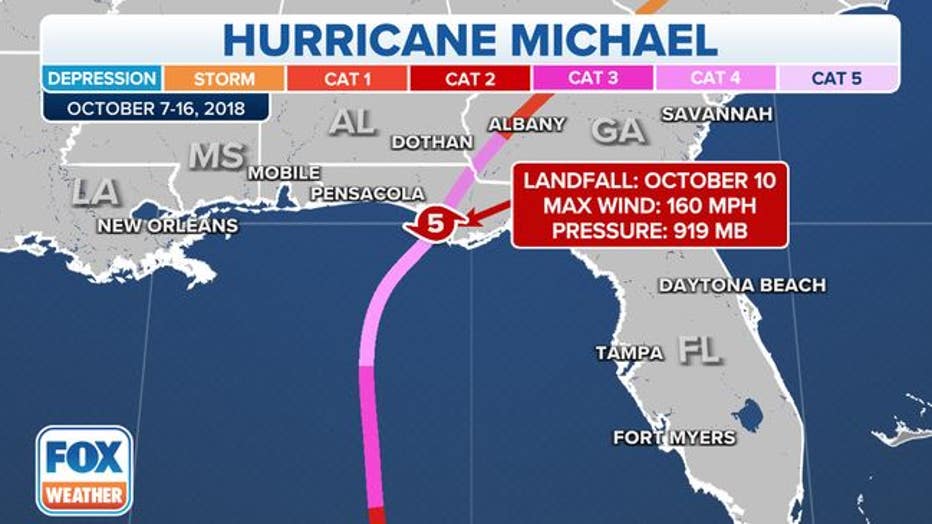TAMPA, Fla. – A hurricane with maximum sustained winds of at least 157 mph is considered to be a Category 5 cyclone on the Saffir-Simpson Hurricane Wind Scale.
A Category 5 is the strongest a hurricane can get on the scale, as there is not a Category 6 rating.
As of 5 p.m. on Monday, Hurricane Milton was a Category 5 storm with winds up to 180 miles per hour.
The wind scale does not take into account flooding, erosion, tornadoes or storm surge that are deadly during a Category 5 hurricane.
According to NOAA, many homes are completely destroyed by either the catastrophic wind or storm surge.
READ: International Space Station captures view of ‘colossal’ Hurricane Milton
Fallen trees and power poles will cut off regions for weeks, with restoration efforts taking months to complete.
Category 5 hurricane explainer (FOX Weather)
Along the coast, a Category 5 hurricane can produce a storm surge of greater than 18 feet, which can propagate many miles inland.
Prior to the arrival of a storm, widespread evacuations are issued, which can lead to significant travel delays.
After the passage of a Category 5 hurricane, clean-up of debris may take a year or more to complete.
Despite warming oceans, these major hurricanes are still considered to be rare, with only 40 documented events across the Atlantic basin.
Only four of the more than three dozen hurricanes have struck the U.S. at Category 5 strength.

There have been four Category 5 landfalls in the U.S. since the 1920s. (FOX Weather)
Category 5 strikes on the U.S.
Labor Day Hurricane (185 mph) – 1935
- Location: Long Key, Florida
- U.S. damage: $100 million
- The unnamed hurricane of 1935 remains the strongest known storm to make landfall in the U.S. The storm caused catastrophic damage in the Florida Keys, where a storm surge of more than 18 feet occurred. According to historical records, hundreds are believed to have perished in the storm.

The track of the 1935 Labor Day Hurricane. (FOX Weather)
Hurricane Camille (175 mph) – 1969
- Location: Waveland, Mississippi
- U.S. damage: $1.4 billion
- Camille was the second-strongest hurricane ever to make landfall in the U.S. A storm surge of more than 20 feet destroyed coastal Mississippi, while wind and rain damage was reported from the Gulf Coast to Virginia. The hurricane was fairly compact, with hurricane-force winds extending outwards 50-60 miles from the center.

Hurricane Camille made landfall as a Category 5 storm on Aug. 17, 1969. (FOX Weather)
Hurricane Andrew (175 mph) – 1992
- Location: Elliot Key, Florida
- U.S. damage: $27 billion
- Hurricane Andrews struck South Florida as a Category 4 hurricane but was upgraded to Category 5 strength after a NOAA reanalysis. After exiting Florida into the Gulf, the hurricane made a secondary landfall in Louisiana as a Category 3 cyclone. Despite being intense, Andrew was a rather small storm with tropical-storm force winds only extending out 90 miles from the center. The catastrophic hurricane led to stricter building codes across the state.
Hurricane Andrew 30 years later
Hurricane Andrews hit South Florida 30 years ago and changed everything from building codes to evacuation plans to insurance.
Hurricane Michael (160 mph) – 2018
- Location: Mexico Beach, Florida
- U.S. damage: $25.1 billion
- Michael rapidly intensified from a Category 1 to a Category 5 in less than 36 hours. The cyclone’s tight organization caused significant wind damage throughout southern Georgia. The storm was the most intense cyclone to strike the U.S. during the month of October and the fourth-strongest hurricane ever to hit the mainland.

Hurricane Michael’s track at landfall in 2018. (FOX Weather)

